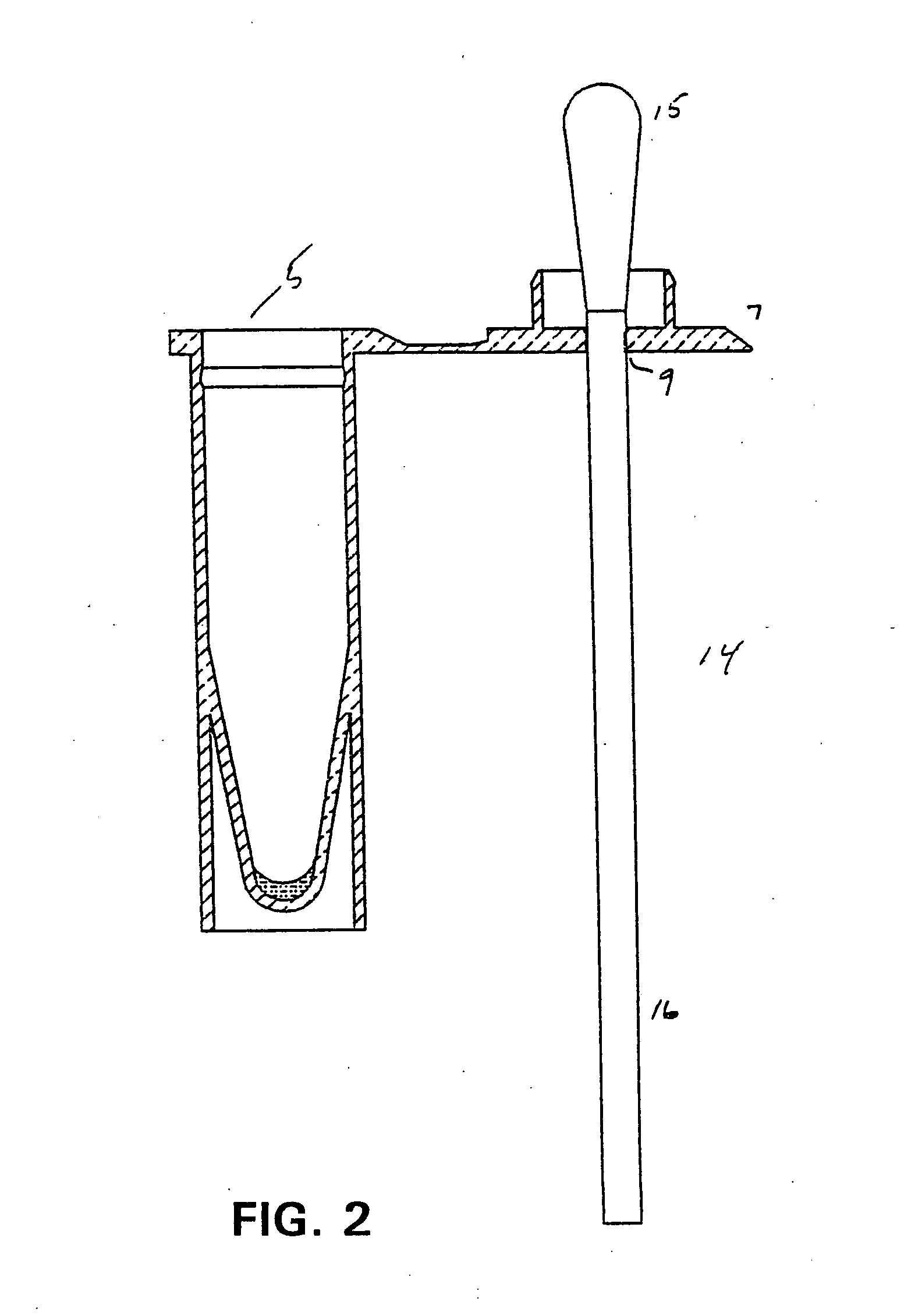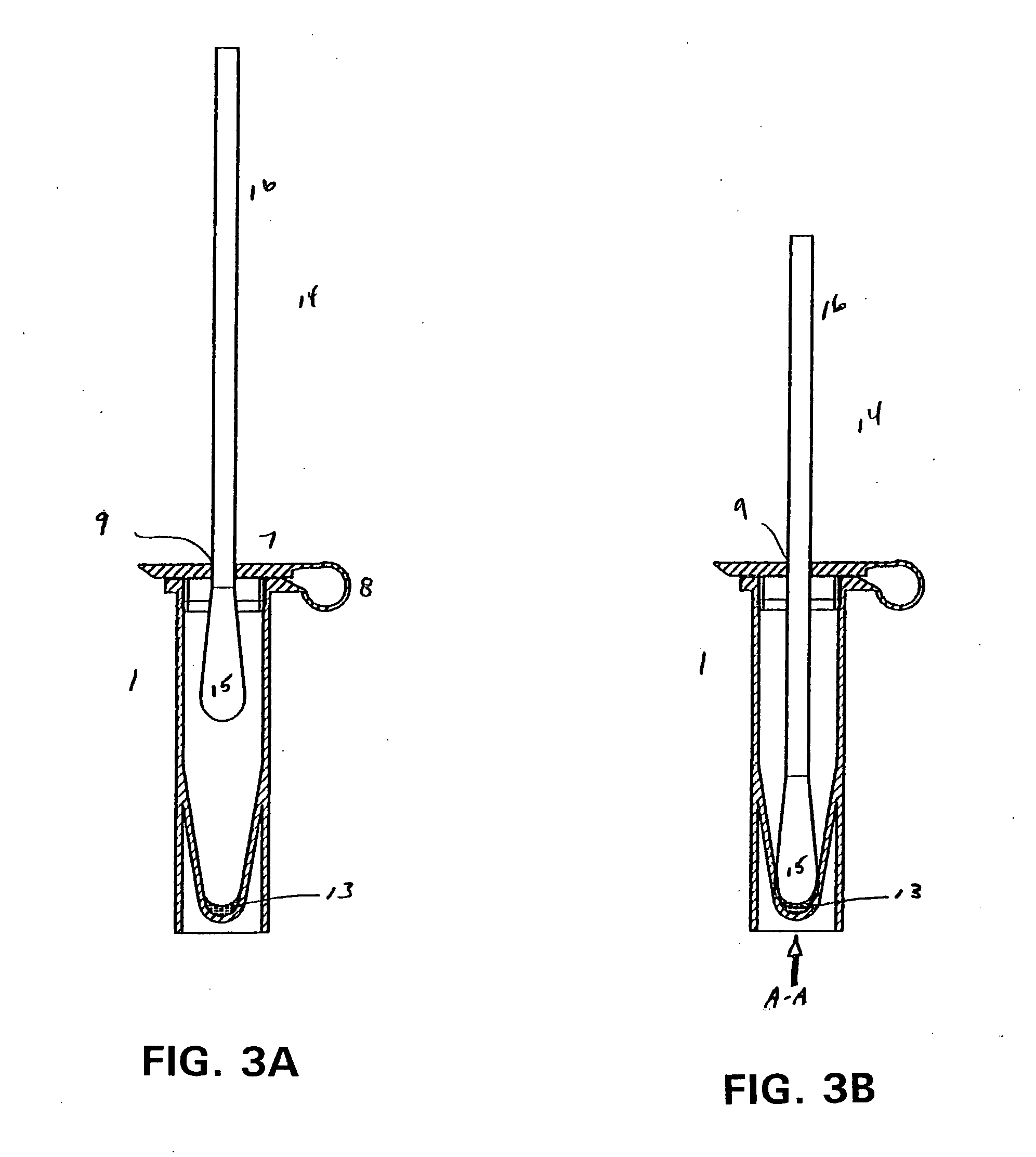Saliva test for hemolytic streptococcus
a technology of streptococcus and saliva, which is applied in the field of diagnostic testing, can solve the problems of nausea, vomiting, abdominal distress, and severe redness of the throat of children with strep throat, and achieves the effects of nausea, vomiting, and abdominal distress
- Summary
- Abstract
- Description
- Claims
- Application Information
AI Technical Summary
Benefits of technology
Problems solved by technology
Method used
Image
Examples
Embodiment Construction
[0023] The present invention has utility as a procedurally simple test to determine the presence of a beta-hemolytic streptococcal bacteria (BHS) in a host. Unlike the majority of BHS tests that rely on antigen-specific binding to an antibody or fragment thereof to confer specificity as to the group and strain of BHS, the present invention provides a simple indication of a generic BHS bacterial population being present.
[0024] As used herein “beta-hemolytic streptococcus” is defined to include those groups Streptococcus pyogenes that are pathogenic through production of at least one extracellular enzymatically active protein, streptokinase, streptolysin, streptodomase, hyaluronidase, or cysteine proteinase. These groups specifically include A, B, C and G. It is appreciated that hyaluronidase and cysteine proteinase are also excreted by other organisms. Specifically, P. gingivalis produces arginine specific cysteine proteinase. Nonetheless, detection of these proteins in combination ...
PUM
| Property | Measurement | Unit |
|---|---|---|
| volume | aaaaa | aaaaa |
| volume | aaaaa | aaaaa |
| concentration | aaaaa | aaaaa |
Abstract
Description
Claims
Application Information
 Login to View More
Login to View More - R&D
- Intellectual Property
- Life Sciences
- Materials
- Tech Scout
- Unparalleled Data Quality
- Higher Quality Content
- 60% Fewer Hallucinations
Browse by: Latest US Patents, China's latest patents, Technical Efficacy Thesaurus, Application Domain, Technology Topic, Popular Technical Reports.
© 2025 PatSnap. All rights reserved.Legal|Privacy policy|Modern Slavery Act Transparency Statement|Sitemap|About US| Contact US: help@patsnap.com



